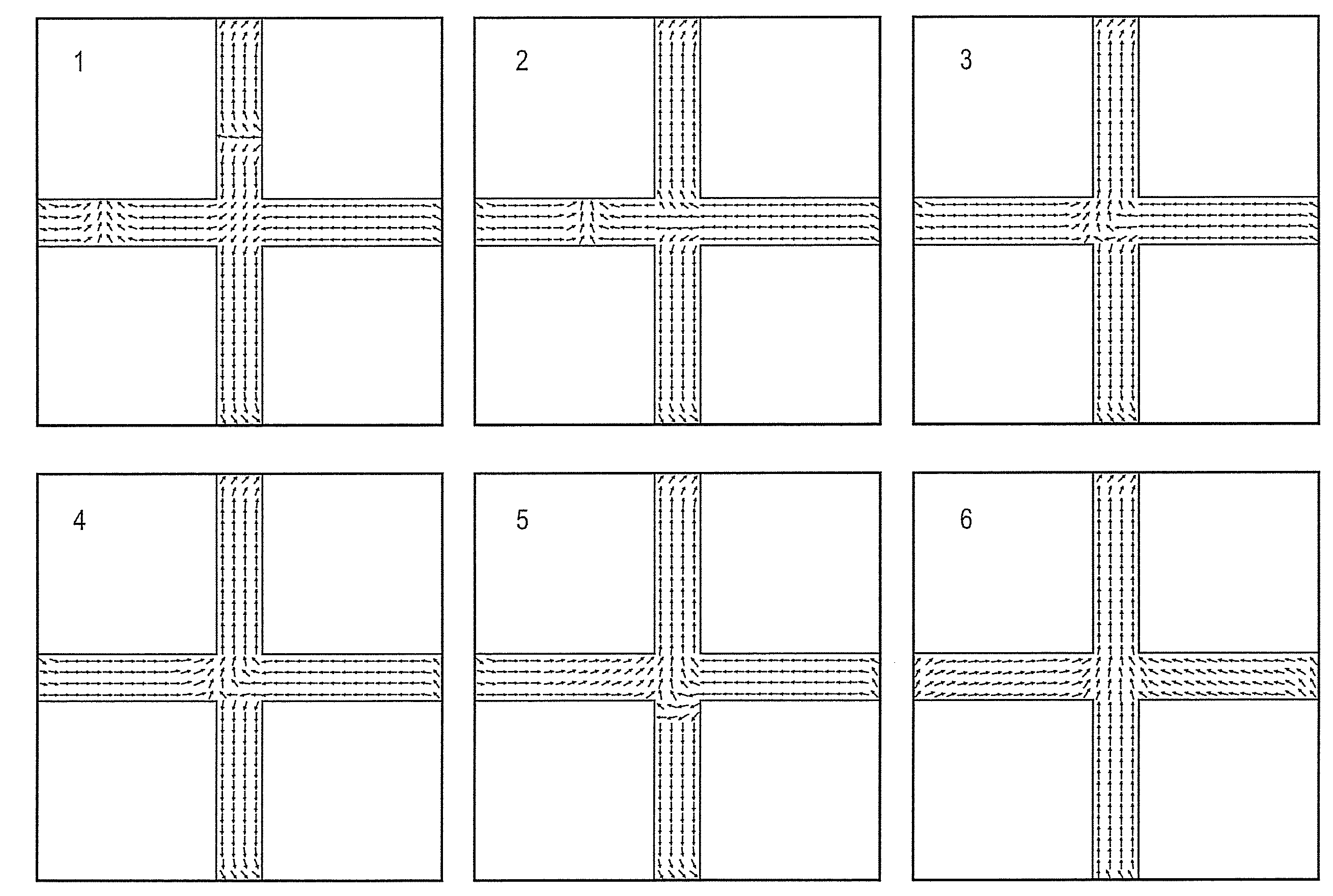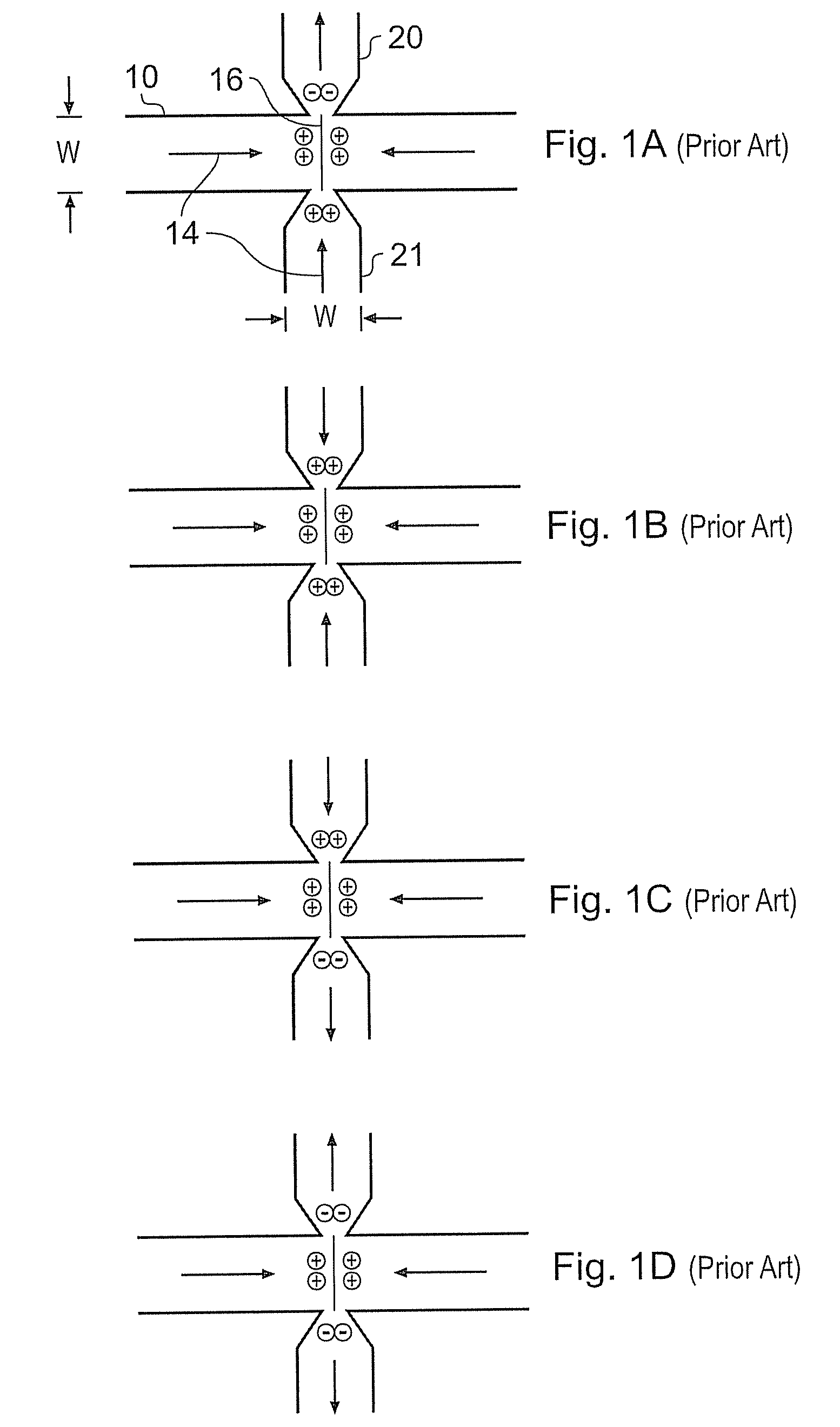Data storage device and method
a data storage and data technology, applied in the field of data storage, can solve the problems of inability to use in high vibration or high shock environments, inability to miniaturize well, and inability to meet the needs of high-speed data storage, etc., to achieve easy scalability, high storage density, and simplified scalability in the vertical dimension
- Summary
- Abstract
- Description
- Claims
- Application Information
AI Technical Summary
Benefits of technology
Problems solved by technology
Method used
Image
Examples
Embodiment Construction
[0083]FIG. 3A is a schematic plan view representation of a magnetic nanowire structure embodying to the invention. The following convention is adopted throughout for the axes. The z axis is the vertical axis, the x and y axes are horizontal. The basic structure is a cross formed by a first nanowire 100 extending in the x direction and a second nanowire 110 extending in the y direction which cross each other at a junction 115.
[0084]The magnetic domains 114 hosted in the nanowires 100 and 110 are illustrated with arrows indicating the magnetic moment in the conventional way. Each domain is bounded by a domain wall 112. As is understood in the art, the nanowire domain walls fall into two types, head-to-head domain walls, such as the illustrated domain wall 112 and tail-to-tail domain walls, the meaning of which will be self-explanatory. Head-to-head domain walls carry positive magnetostatic charge and tail-to-tail domain walls carry negative magnetostatic charge. The positive and negat...
PUM
 Login to View More
Login to View More Abstract
Description
Claims
Application Information
 Login to View More
Login to View More - R&D
- Intellectual Property
- Life Sciences
- Materials
- Tech Scout
- Unparalleled Data Quality
- Higher Quality Content
- 60% Fewer Hallucinations
Browse by: Latest US Patents, China's latest patents, Technical Efficacy Thesaurus, Application Domain, Technology Topic, Popular Technical Reports.
© 2025 PatSnap. All rights reserved.Legal|Privacy policy|Modern Slavery Act Transparency Statement|Sitemap|About US| Contact US: help@patsnap.com



